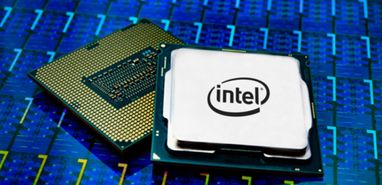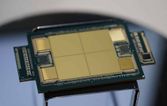
In recent quarters, following each major drop in stock prices, Intel investors have repeatedly asked the question: is this the bottom? Unfortunately, the answer has consistently been negative.
Now, with Intel’s situation becoming increasingly dire—reflected in the company’s market capitalization falling below the psychologically important $100 billion mark—investors are once again placing their hopes on an upcoming critical board meeting in September, which they believe could potentially halt the company’s ongoing decline and initiate the challenging process of a sustainable recovery.
The first hints of a major revival plan reportedly emerged this Friday when Bloomberg disclosed that Intel is collaborating with several financial advisers, including the Wall Street giant Morgan Stanley, to devise strategic options for the upcoming board meeting.
These advisers are also reported to be assisting Intel in countering a high-profile challenge from activist investors, who remain understandably frustrated with the ongoing turmoil within the company.
This brings us to the core of the issue. According to the latest reports from Reuters, Intel plans to propose selling its FPGA unit Altera at the forthcoming board meeting, as the unit’s inherent profitability is no longer sufficient to sustain its operations. Another option under consideration is a construction freeze on Intel’s $30 billion German facility, aligning with the company’s previously announced plans to reduce capital expenditure by 17% in 2025, bringing it down to $21.5 billion.
Interestingly, Reuters has also reported that Intel will not propose selling its chip manufacturing business at the upcoming meeting. This decision is understandable, given that Intel has already secured billions of dollars in federal funding to establish a substantial manufacturing presence in the U.S., complicating any potential divestment strategy.
It’s important to note that Intel is currently focusing on its Foundry unit to drive margin growth. The company expects this unit’s ongoing expansion to lead to cost savings of “more than $8 billion to $10 billion by the end of 2025,” allowing for a non-GAAP gross margin of around 60% and non-GAAP operating margins of approximately 40% by 2030.
However, considering the current state of affairs at Intel, the company might eventually have no other option but to pursue a divestment of its chip manufacturing unit.
Meanwhile, as reported earlier, Lip-Bu Tan, a prominent Intel board member, has recently resigned, citing the board’s reluctance to consider his suggestions for making Intel’s contract manufacturing business more customer-centric and for eliminating the bureaucratic layers—especially the numerous middle managers—that hinder innovation within the company’s desktop and server divisions.








By Andrej Kovacevic
Updated on 10th March 2025